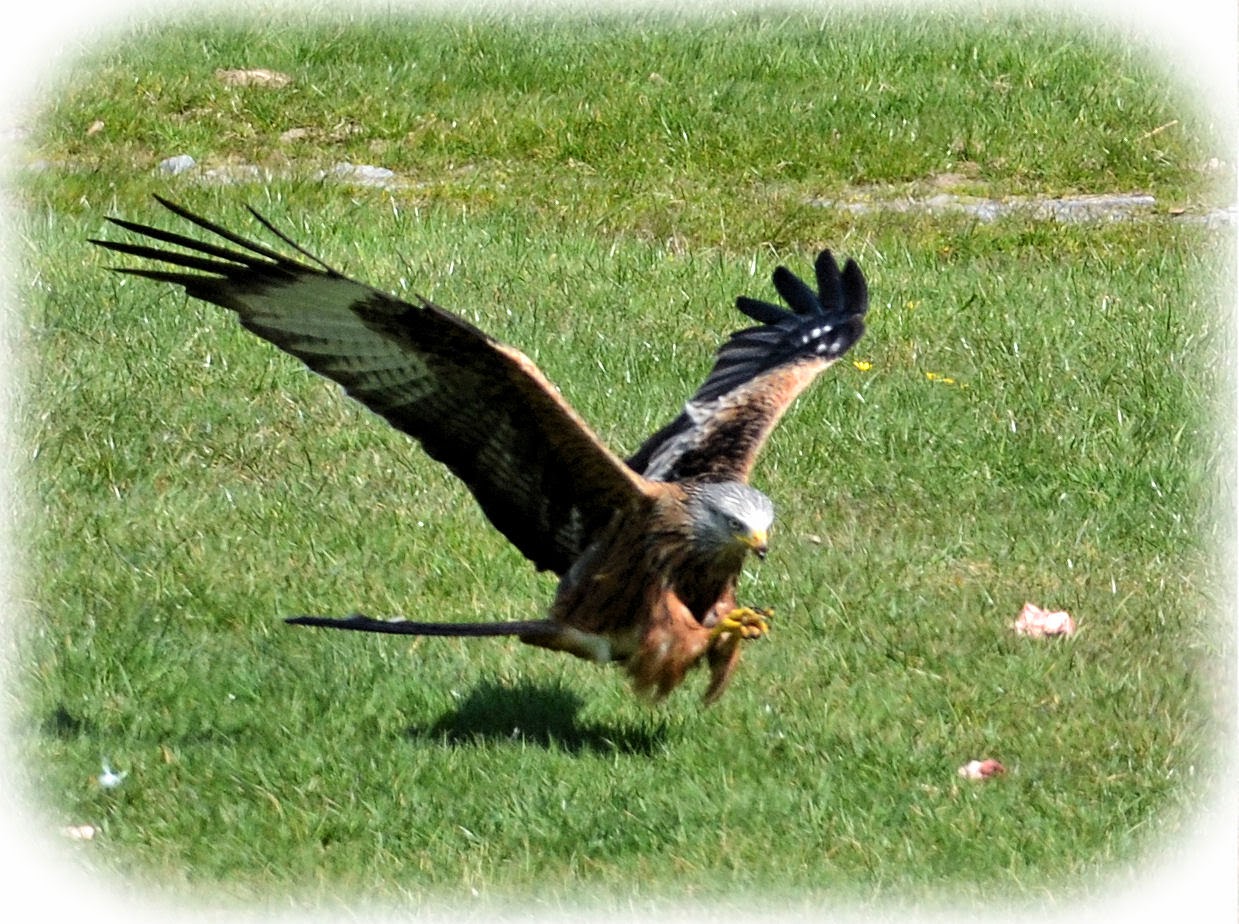Once a common site in towns and cities all over the UK, the Red kite has been persecuted from as far back as the sixteenth century and nearly wiped out by the end of the eighteenth century, only in rural mid Wales did the Red Kite manage to hold on, reduced to just a couple of pairs.
Luckily, over the last hundred years, through the work of various conservation organisations, the Red Kite has managed a remarkable recovery, we should all be grateful to the Welsh Kite Trust and the RSPB that we can still see these beautiful birds in our countryside.
No visit to Wales is complete for me without a visit to the Kite feeding stations, in particular the one at Gigrin Farm at Rhayader, Powys.
Most of my sightings away from Wales have been a low glide over a motorway, the M40 in particular.
I was lucky enough last year, while out cycling to see a Red Kite feeding behind a tractor, swooping down for earthworms in the ploughed up field at Higham in Kent.
To really appreciate the beauty of this bird and its sheer agility in the air, a visit to a Kite feeding station is a must, not only seeing vast numbers of Kites interacting with each other, but to see the flying skill of these Kites is unforgettable.
As we travelled down through mid Wales from Snowdonia the countryside is noticeably more rural , the green hills and valleys of Wales, perfect Kite country.
On Approaching Rhayader, Red Kite sightings were increasing, they seem to know exactly when the feeding stations are going to lay there next meal.
My last visit here was back in 2006, things have changed a bit, the facilities improving with a new cafe, there are more hides to watch and photograph the Kites, but still a very friendly informal atmosphere.
This was also my opportunity to practice my photography skills, so many birds, it was hard to know which way to look.
Once the tractor has scattered the fresh beef over the field in front of the hides, the Kites come swooping in, snatching up morsels of meat, consumed on the wing, very unusual to see one actually land to feed.
The following photographs are some of my favourite shots.
The wing tagged Kite in the photograph can be interpreted as follows, the right wing tag indicates the year the Kite was born in this case 2008, the number indicates the nest site , the left wing tag usually indicates the area the Kite was born in, although this cannot be seen in the photograph.
There is sometimes a coloured line under the number on the right wing tag, this indicates the colour of the left wing tag when it can't be seen.
Surprisingly there was only one Buzzard feeding always on edge with one eye on the swooping kites.
The Wing tagged Kite on the left shows that this Kite was bred in Wales in 2002 I believe, the Red Kite literature states, that most Kites have a life span of four to five years, although they can live up to 26 years.
In amongst the corvids, this huge Raven was feeding.
In the long grass bordering the feeding area, this fox looked on longingly at the feeding frenzy,
not daring to venture out to snatch a meal.

This was the only Kite to settle on the ground to grab a morsel of meat.
After the initial feeding frenzy in which Kites are swooping down in all directions, the pace slows down and the Kites circle the area, before dispersing.
There must have been in excess of a hundred Red Kites in the air together. A great site to see.


















No comments:
Post a Comment